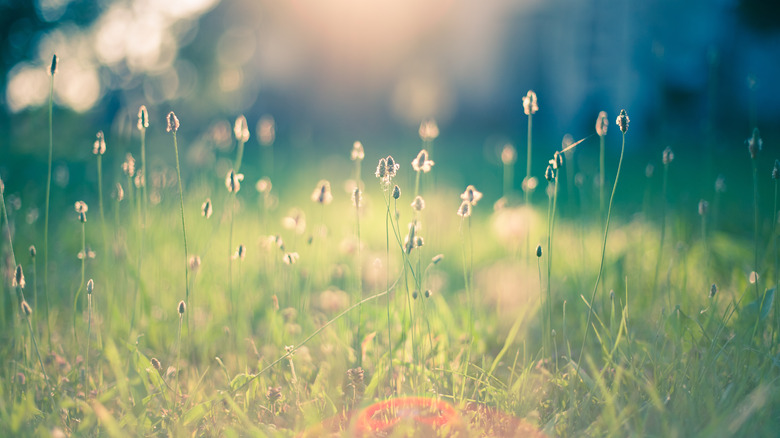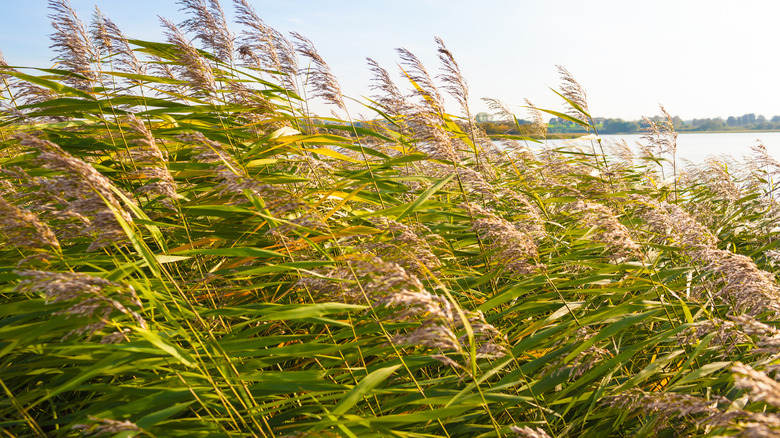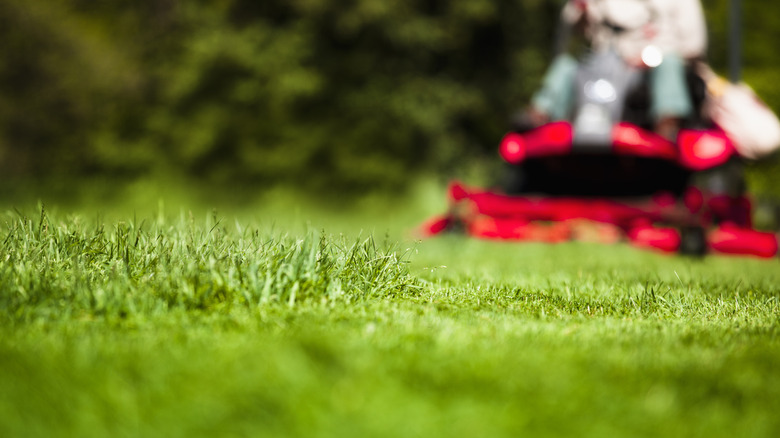Your Grass Shouldn't Flower, Here's What To Do If It Does
Grass flowers. While it may not be the type of flowers you are used to with beautiful colored petals and long stems, some grass can develop small flowers at the very top of the blades as grass grows. Most often, when purchasing grass seed from your local garden shop, the bag will contain numerous grass varieties rather than just a single species. They also are made up of hybrid grasses, which are genetically modified to resist disease and grow easily. The problem with this type of grass seed is that it typically isn't ideal for producing viable, healthy-looking grass. Often, the seed will produce grass that's inferior, perhaps not as healthy, or it may be a different shape than what is present. Other times, the grass will flower, but the seeds themselves aren't viable but rather are sterile, meaning nothing will grow from them.
Unless you've installed grass from a high-quality, specialized supplier, then it's best not to let your grass go to the flowering stage, or if it does, don't count on it to fill in and beautify your yard. Fortunately, mowing can easily remove these flowers, but there are some precautions you should take — otherwise, you might inadvertently damage your lawn.
Why grass flowers
In the natural cycle of life, plants grow from seed and then mature, eventually producing seeds to propagate more grass. In a natural setting, flowering grass is simply following this process. Unlike a flower that needs to develop beautiful blooms to attract pollinators, grass seed spreads through the wind, which carries seeds to land throughout the soil in the area and beyond.
When the grass in your lawn flowers, it can create two concerns for many property owners. First, it doesn't look all that attractive, and your neighbors may be wondering why you're not keeping up with the yard. While there's nothing wrong with flowering in terms of the health of the grass, some people simply don't prefer this to occur. Luckily, for most grass, flowering takes place once a year, often over the span of a few weeks. The second reason people don't like it is because those grass seeds can encourage grass to grow anywhere the wind takes it. This can be problematic if you're trying to control grass growth, and prefer to keep it in your lawn and not in the flowerbeds which would require more weeding.
How to handle flowering grass
When you notice your grass beginning to develop seeds along the upper portions of the blades, don't worry too much about its presence. For this period of time, try to mow the grass at the highest setting, which will allow for just the tops of the blades to come off. This is beneficial because, during this flowering season, grasses are putting a lot of energy into the production of seeds. When you chop off too much of that, you put stress on the blades, and that can cause your grass to struggle to come back properly. Mow your lawn more often during this period, once every few days rather than once a week. Doing so will reduce the amount of flowering without stressing the blades. While you're at it, be sure your lawn mower blades are in top shape. Dull blades cause damage to the yard instead of cutting it, and that makes it harder for the grass to recover.
This is also a great time to add nutrients to your soil since the grass blades are soaking up so much energy to produce flowers. Too much water, fungal infestations, and pests can easily invade the grass during this more vulnerable time and damage it. By supplementing with a good feeding fertilizer, you give the grass what it needs to be more resilient.


